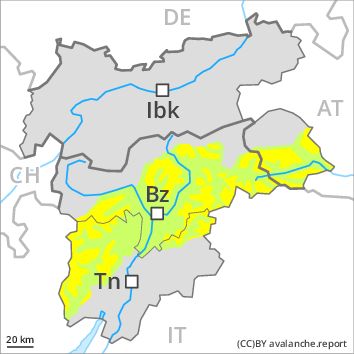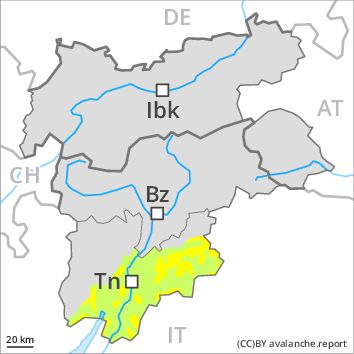Regions
Sexten Dolomites, Eastern Pfunderer Mountains, Latemar, Western Deferegger Alps, Ulten Valley, Eastern Nonsberger Alps, Northern Dolomites of Fiemme, Gröden Dolomites, Southern Adamello, Eastern Deferegger Alps, Prags Dolomites, Sarntal Alps, Adamello - Presanella, Schober Mountains, Western Pfunderer Mountains, Northern Brenta - Peller, Lienzer Dolomites, Western Nonsberg Alps, Southern Brenta, Fassa Valley, Sole, Pejo and Rabbi, Maddalene

Danger level
Avalanche Problem
Wind-drifted snow above 2300m, N-NE-NW

Wind slabs require caution.
The clearly visible wind slabs can be released by a single winter sport participant in isolated cases in particular on steep shady slopes above approximately 2300 m. The avalanche prone locations are to be found in particular adjacent to ridgelines and in gullies and bowls. They will increase with altitude. In the regions neighbouring those that are subject to danger level 3 (considerable) the avalanche danger is higher. In steep terrain there is a danger of falling on the hard crust.
Snowpack
dp 6: cold, loose snow and wind
The no longer entirely fresh wind slabs have bonded quite well with the old snowpack. The snowpack will be subject to considerable local variations. The old snowpack will be moist below approximately 2300 m.
Tendency
The danger of dry slab avalanches will decrease gradually.
